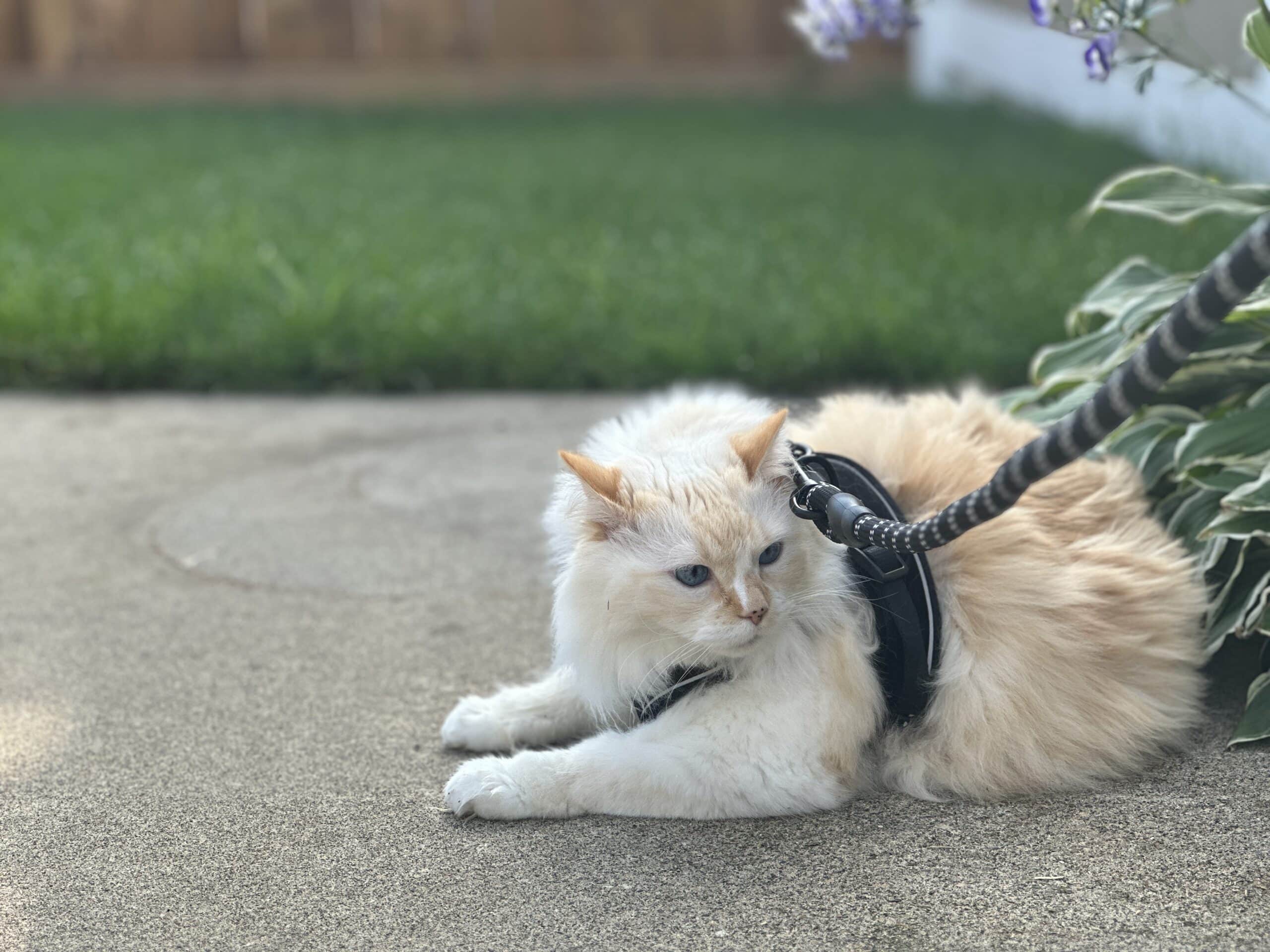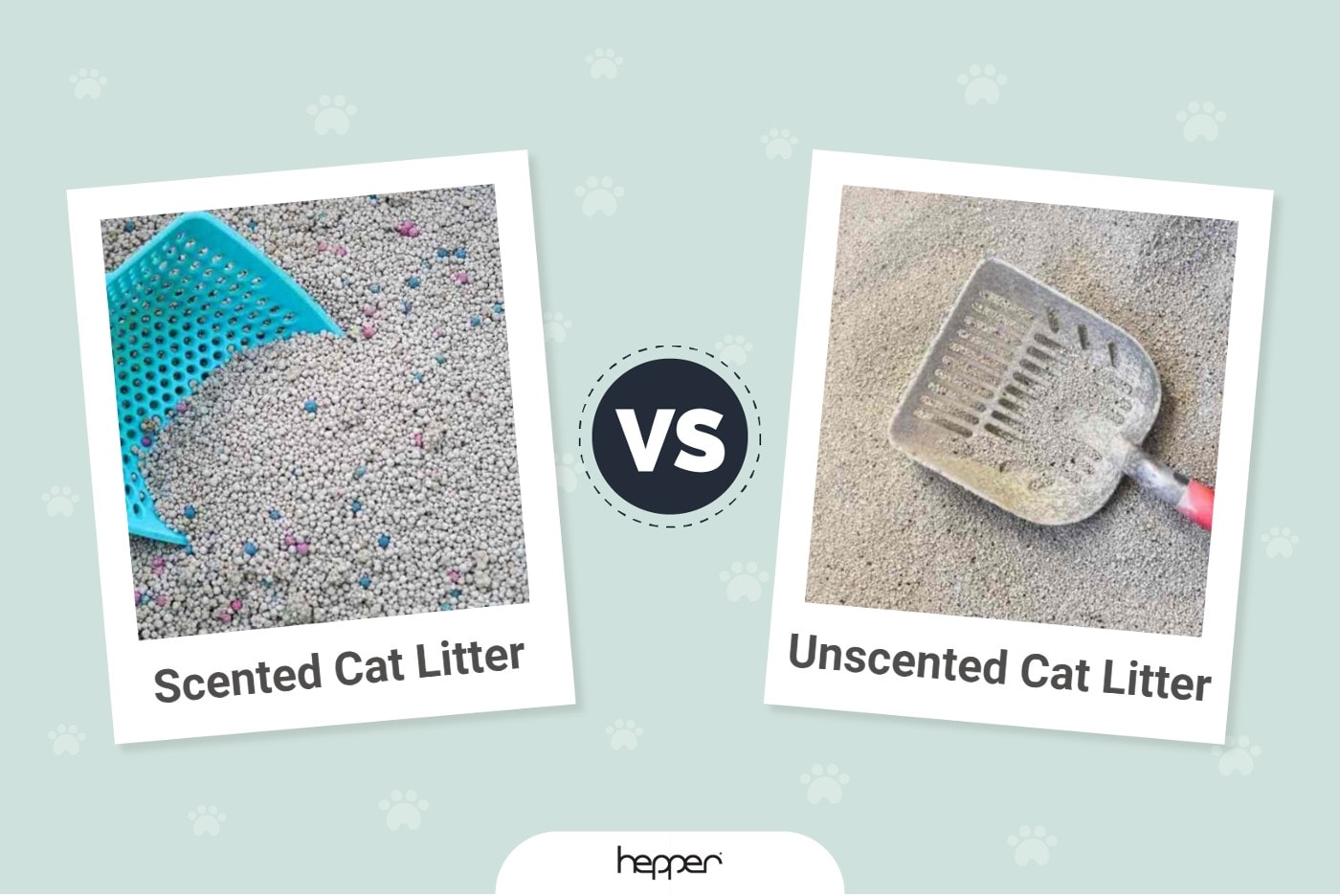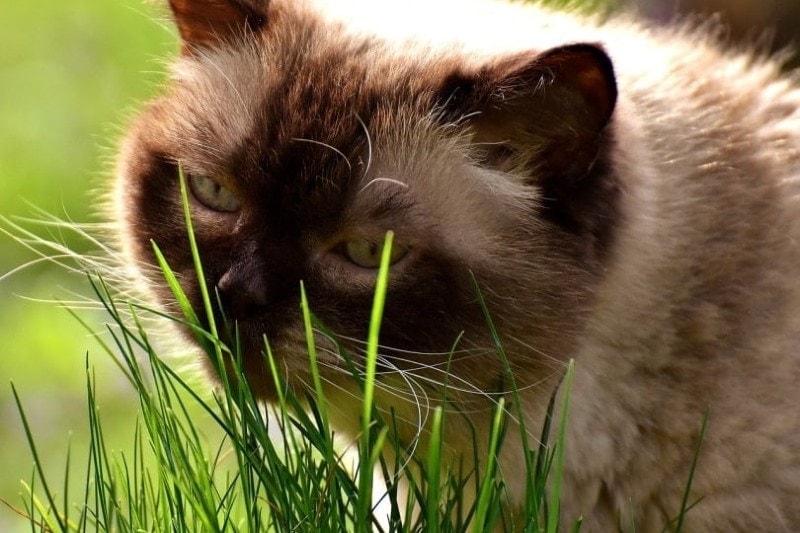Cat Dander vs. Cat Dandruff: Differences & What to Do (Vet-Approved)
Updated on
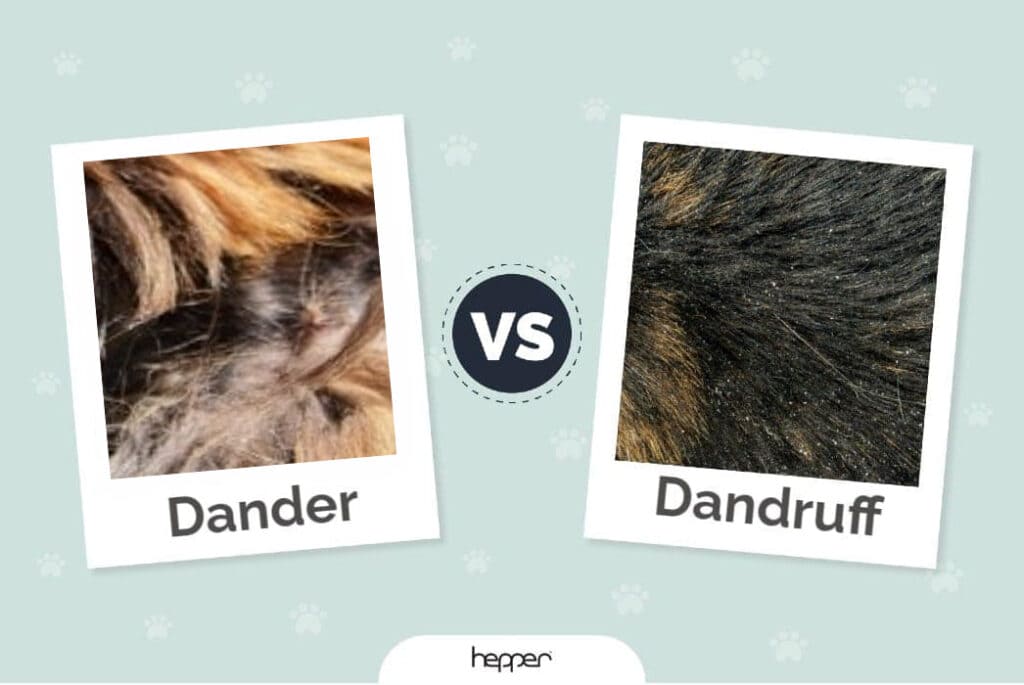
Click to Skip Ahead
Don’t worry, we’ve got you covered. We’ll show you everything you need to know about these tiny white flakes, which can be frustrating for cats and worrying for their humans. However, it is possible to treat them effectively once you determine the source.
Overview of Cat Dander

What Is Cat Dander?
Cat dander is different from cat dandruff. Dander is normal and very healthy for your cat. This is because they are simply the result of the loss of your cat’s skin cells. Thus, dander is dead skin cells that are regularly shed and replaced with new skin cells. Dander is shed microscopic skin cells that cannot be seen by the naked human eye. Cats are not the only animals that produce dander: dogs, rodents, birds and even humans produce it regularly, as skin cells are renewed.
Dander is often considered an allergen to humans because it contains and volatilizes Fel d 1. Most people who are allergic to cats have an allergy to this specific protein, which can be found in a cat’s skin, saliva, urine, fur, and anal glands.
How Do You Know if Your Cat Has Dander?
All cats produce and have dander. However, they are microscopic and almost impossible to detect with the naked eye. Because of this, if you see an abundance of small white flakes in your cat’s coat, it is more than likely to be dandruff and not dander.
- Dander are tiny pieces of dead cells
- All cats produce dander
- Dander is safe for cats and completely normal
Overview of Cat Dandruff
What Is Cat Dandruff?
Cat dandruff is a skin condition characterized by dry, itchy, flaky skin. Dandruff appears when the cat’s sebaceous glands start to produce too much sebum. 1 Normally, sebum nourishes and protects the skin of the cat, just as it does for the human scalp. However, it can result in dandruff when too much oil is produced, the oil builds up because a cat is unable to normally groom themselves, or they are suffering from a skin infection, ectoparasites, or allergies. This causes scaling, itching, and more-than-normal hair loss.
What Causes Cat Dandruff?
As mentioned above, cat dandruff is a skin condition characterized by dry, itchy, flaky skin. Normally, sebum nourishes and protects the skin of the cat. However, when too much oil is produced, or the oil builds up because a cat is unable to normally groom itself or it is suffering from a skin infection, ectoparasites, or allergies it can also result in dandruff. This causes scaling, itching, and more than normal hair loss.
In many cases, cat dandruff is the result of dry skin. Usually, dry skin is caused by issues in your cat’s diet, such as a deficient diet, or the lack of humidity (such as dry indoor air), and other environmental factors. However, cats with oily skin can also get dandruff, as the excess oil in the skin causes the loss of excess skin cells.
Whether they have oily or dry skin, cats with arthritis or obesity can also have scaly skin, as these conditions can limit a cat’s ability to rid their coat of dead skin cells during grooming. There are also possible medical causes of cat dandruff. Besides infections and parasites, cutaneous lymphoma, a form of skin cancer, should be checked for in the differential diagnosis. Always consult your veterinarian to rule out any underlying medical cause for your cat’s peeling skin.
How Do You Know if Your Cat Has Dandruff?
If you notice white flakes on your feline’s skin or coat, it’s a sure sign that they have dandruff. In addition, their skin may appear drier, itchy, and inflamed in some places. Your cat will also tend to scratch more often; hairless areas may also appear in their coat.
Note: These symptoms may also indicate a health problem or infection in your cat (usually due to excessive scratching caused by dry skin) that requires veterinarian intervention. Watch your cat closely if you see these symptoms appear suddenly.
- Cat dandruff is the direct result of too dry or too oily skin
- Dandruff can irritate the skin, cause itching and redness
- Cat dandruff can be an underlying symptom of a disease

How to Get Rid of Cat Dandruff
Your cat doesn’t have to suffer from dandruff. There are a variety of simple and easy treatments you can do at home that will help remove dry skin and decrease your pet’s painful and uncomfortable symptoms:
1. Groom Your Cat Every Day
Use appropriate tools, such as a wire brush and a comb with long teeth. This is a very effective method of removing dry skin from your cat since the mechanical effect of brushing helps distribute the oils throughout the coat. It also helps to remove dead hair and speed up the renewal and replacement of dead cat skin cells.
2. Get a Humidifier for Your Home
Just like us, cats can suffer from dry skin due to a lack of humidity in your home. Thus, a humidifier helps restore humidity to the surrounding air and reduce problems caused by dry skin, such as dandruff.
3. Modify Your Cat’s Diet
Your pet may be lacking in essential fatty acids, such as omega-6 and omega-3 fatty acids. These fatty acids are linked to healthy skin and coat, including reducing inflammation of the skin. For example, Natura Petz Organics Omega 3 & 6 are powdered supplements that you can add directly to your cat’s dry or wet food. Talk to your vet about the options.
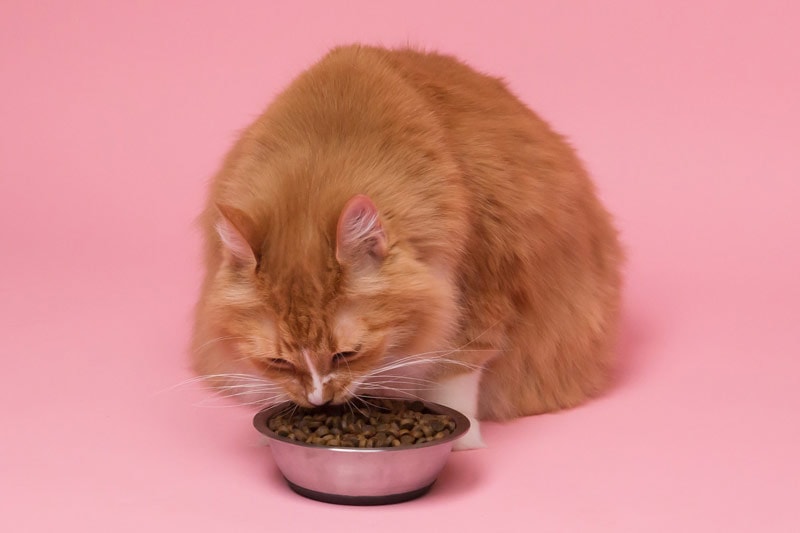
4. Make Sure Your Cat Is Hydrated
Like humans, cats don’t always get the hydration they need, especially cats who eat only dry food. Supplement your cat’s diet with wet cat food to help keep them hydrated, and you may see a reduction in the amount of dandruff. Invest in a water fountain to entice your cat to drink.
5. Reduce Your Pet’s Stress
Dry skin and hair loss increase when your cat is stressed. Do what you can to help relieve stress by avoiding any changes in routine or surroundings. Cats are sensitive to some of the same stress reducers that you may be using too, like soothing noises and smells. Playtime can also be a good stress reliever, just as exercise is an effective stress reliever in humans.
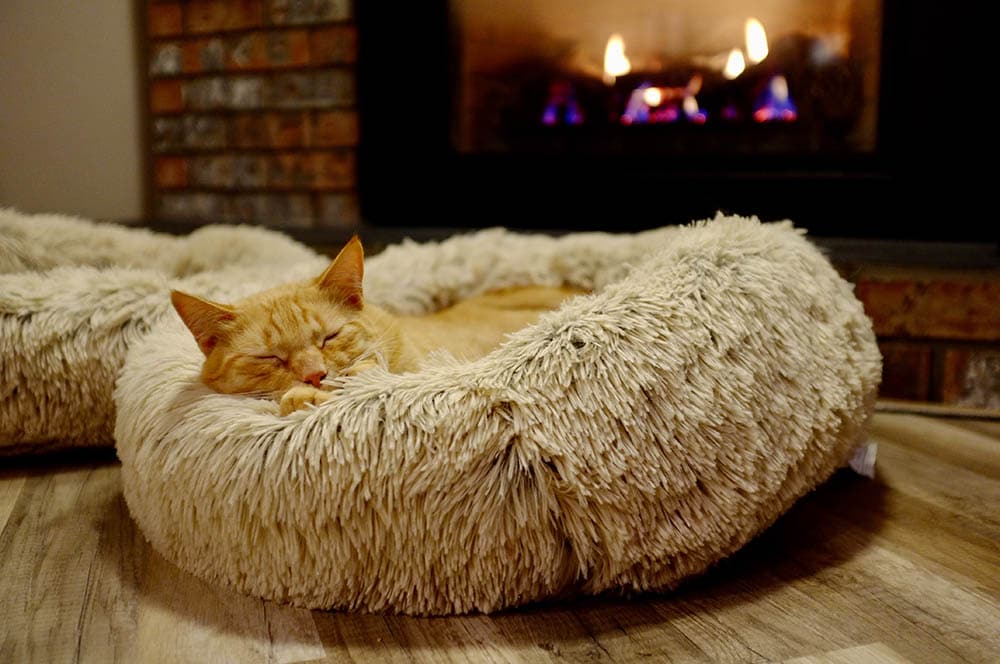
Conclusion
Cat dandruff is certainly no picnic, neither for you nor your feline friend, but it can be cured once you know what to do. And while this may seem like a minor problem, it’s a good idea to have your cat checked out by a veterinarian to rule out any possibility of a more serious problem. Your vet can also give you dandruff tips and remedies to help your cat cope with this all-too-common skin condition.
On the other hand, cat dander is simply tiny pieces of skin and dead cells. This is a normal process of regenerating your pet’s skin cells that you don’t have to worry about.
- Related Reads: 8 Best Cat Shampoos for Dander
Featured Image Credit: Left: Lemalisa, Shutterstock | Right: Nau Nau, Shutterstock



